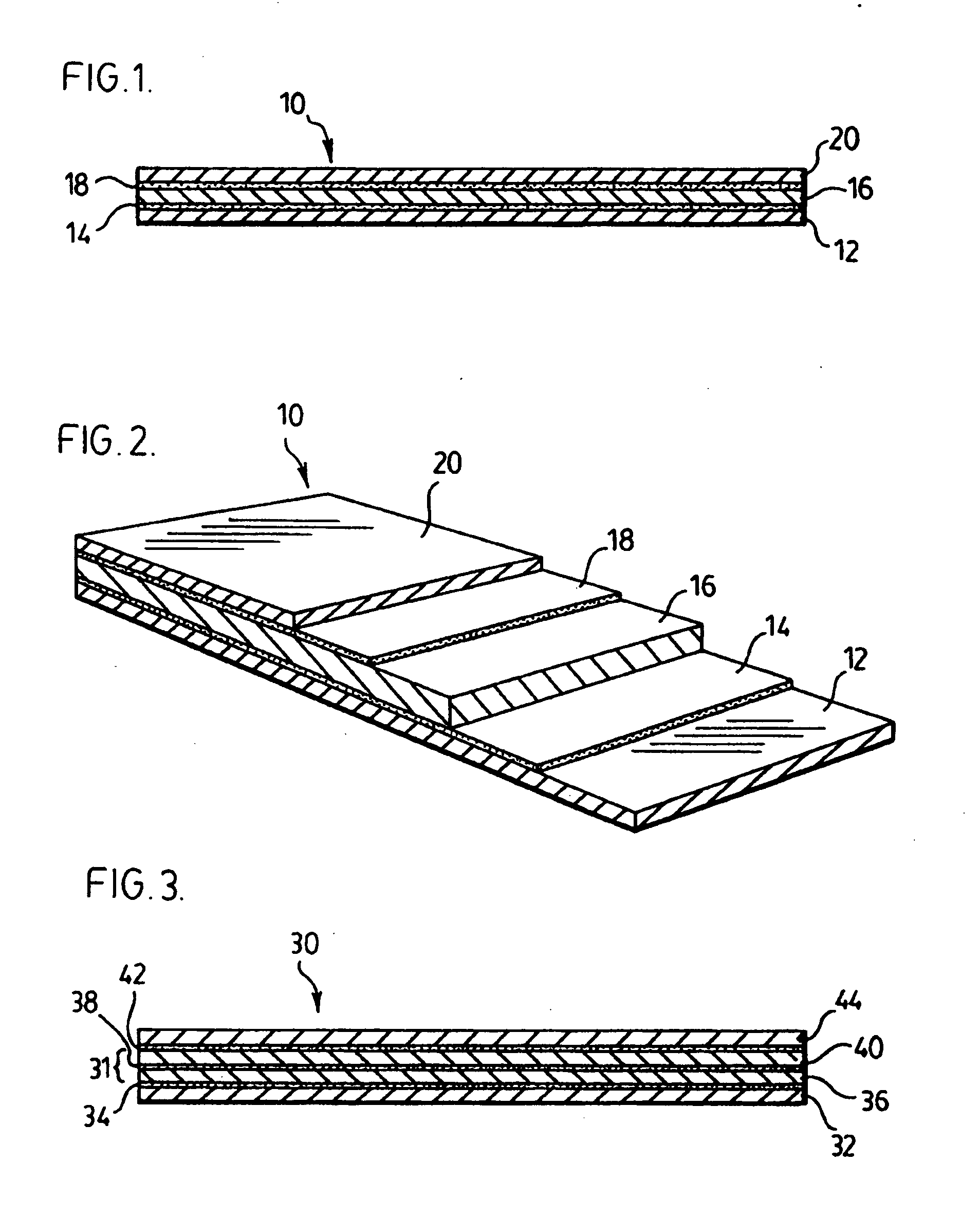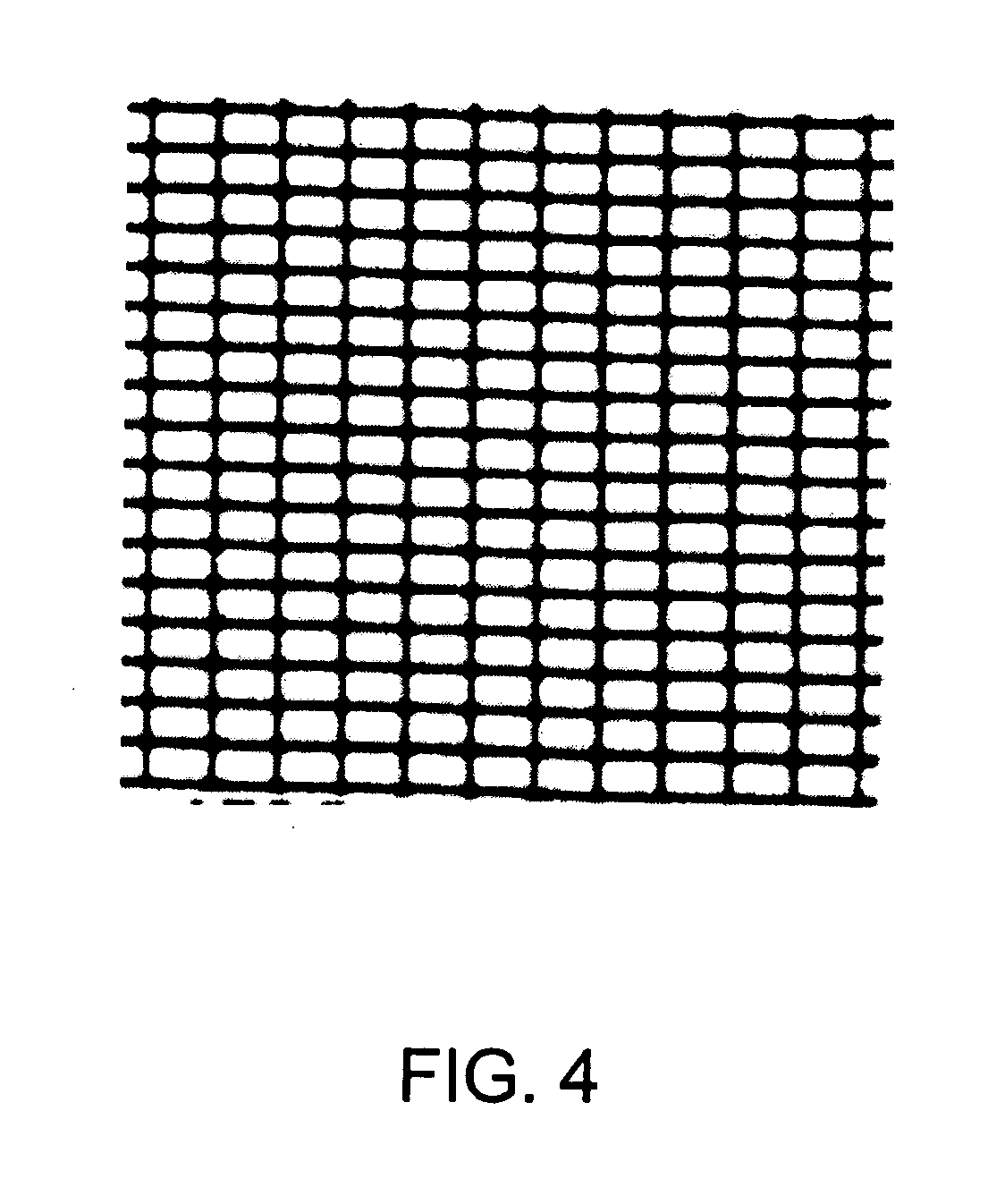Laminate panel and process for production thereof
a technology of laminate panels and resins, applied in the field of laminate panels, can solve the problems of less than desirable weight and cost of laminate products incorporating such polymer core materials, and the resin used in laminates may have a softening point, and achieve the effect of facilitating the production of parts
- Summary
- Abstract
- Description
- Claims
- Application Information
AI Technical Summary
Benefits of technology
Problems solved by technology
Method used
Image
Examples
examples
[0063] In the Examples a number of samples were made using steel skins and a core.
[0064] Each steel skin had a thickness of 0.010 inches and a zinc coating (˜60 g / m2) on each side.
[0065] The core was either resin alone or a combination of resin and a reinforcing layer.
[0066] The resin was a thermoplastic co polyester based elastomer, where the co polyester is a polyether-ester formulation. The resin was used in sheet form. The thickness used in each sample is reported Table 1.
[0067] The reinforcing layers used in the samples were: steel woven mesh, woven jute of different weave types, paper, cotton and linen.
[0068] Various combinations of pressure, temperature and cycle times were investigated.
[0069] The samples were made on a Carver press (75t) at 450° F., for 1 min with a pressure of 10 tons (about 138 psi, except for the resin only samples); followed by a cool in the press, under pressure to 350° F., cooled at about 1.5 s. ° F.−1.
[0070] The samples produced are summarized ...
PUM
| Property | Measurement | Unit |
|---|---|---|
| Temperature | aaaaa | aaaaa |
| Temperature | aaaaa | aaaaa |
| Temperature | aaaaa | aaaaa |
Abstract
Description
Claims
Application Information
 Login to View More
Login to View More - R&D
- Intellectual Property
- Life Sciences
- Materials
- Tech Scout
- Unparalleled Data Quality
- Higher Quality Content
- 60% Fewer Hallucinations
Browse by: Latest US Patents, China's latest patents, Technical Efficacy Thesaurus, Application Domain, Technology Topic, Popular Technical Reports.
© 2025 PatSnap. All rights reserved.Legal|Privacy policy|Modern Slavery Act Transparency Statement|Sitemap|About US| Contact US: help@patsnap.com



